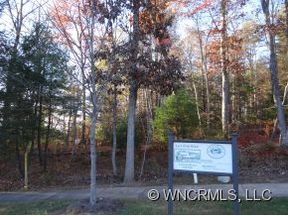Robust Improvement for Housing is Lifting Economic Growth
How times have changed. With data in from the Bureau of Economic Analysis (BEA), it is becoming clear that home building is a leading source of economic growth for 2012. According to the BEA, Gross Domestic Product (GDP) increased at a 2% annualized rate during the third quarter. This was an improvement, albeit a small one, from the 1.3% rate of growth during the second quarter and matches the 2% rate for the start of 2012. GDP growth has only exceeded 2.6% for one quarter (the final quarter of 2011) since the start of 2010. As the overall economy has slowed, housing has generated an outsized share of the expansion. Home building and remodeling (residential fixed investment, or RFI) added 0.33 percentage points to the final tally of GDP growth, or 17% of the total. In the second quarter, RFI yielded 15% of net growth and 22% in the first quarter of 2011. These numbers are impressive considering that RFI remains only 2.5% of GDP as of the third quarter and housing starts remain half the size of a normal, healthy market. Of the three primary elements of the housing sector (new home construction, remodeling and existing home sales), new home sales continue to experience the largest gains, increasing in September 5.7% to an annual rate of 389,000, the highest level since the home buyer tax credit expired in early 2010. The three-month moving average of new home sales has increased steadily for more than a year as more housing markets begin to see rising home prices and improving consumer sentiment. The supply of new homes for sale fell to a seven-year low of 4.5 months as the pace of sales picked up, but the inventory advanced by only 2,000. The number of completed homes for sale and ready for immediate move-in remains at a record low of 38,000 as builders remain cautious about building ahead of the market and as credit access remains tight. In the remodeling sector, recent indicators suggest expansion after two years of moving sideways. For example, the NAHB Remodeling Market Index (RMI) climbed to 50 in the third quarter of 2012, up from 45 in the previous quarter. At 50, the RMI is at its highest point since the third quarter of 2005. In the third quarter of 2012, the major RMI component on current market conditions rose from 46 to 52, while the future indicators component increased from 44 to 49.Each of the major RMI componentsis now higher than it has been at any time over the past six years. The RMI reading for current remodeling activity was particularly strong in owner-occupied housing during the third quarter. The subcomponents of the current conditions index for owner-occupied housing were all well over 50, ranging between 55 and 60. Existing homes sales, as reported by the National Association of Realtors (NAR), decreased 1.7% in September month over month, but are up 11% from the same period a year ago. NAR reported that September total existing home sales were at a seasonally adjusted rate of 4.75 million units combined for single-family homes, townhouses, condominiums and co-ops. That compares to an upwardly revised 4.83 million units in August and 4.28 million units during the same period a year ago. The total existing housing inventory at the end of September decreased 3.3% from the previous month to 2.32 million homes for sale. At the current sales rate, the September inventory represents a 5.9-month supply, down from a revised 6-month supply in August and much improved from the 8.1-month supply of homes a year ago. NAR reported 24% of September sales were foreclosures and short sales sold at deep discounts. This level was up from 22% in August, and down from 30% a year ago. In September 2012, all cash sales increased to 28%. Investors accounted for 18% of home sales, and first-time buyers accounted for 32% of sales, according to NAR. Despite the September decline, there was good news for future existing home sales. The NAR Pending Home Sales Index (PHSI), a forward-looking indicator based on signed contracts, increased 0.3% in September to 99.5, up from 99.2 in August. The September PHSI was 14.5% higher than the same period a year ago. Year over year, the PHSI has increased for 17 straight months. Further, there was more good news for housing prices. August data from the Federal Housing Finance Agency indicate house prices increased nationally 0.7% from July levels on a seasonally adjusted basis. This brings the cumulative gain for 2012 to 4.6% after being essentially flat through 2011. All nine Census divisions followed the national pattern with a relatively flat performance in 2011, but the year-to-date gains in 2012 have been somewhat uneven, ranging from a low of 0.9% in the Middle Atlantic division to a high of 10.4% inRead More

 ENERGY STAR certified new homes are designed and built to standards well above most other homes on the market today, delivering energy efficiency savings of up to 30 percent when compared to typical new homes. A new home that has earned the ENERGY STAR label has undergone a process of inspections, testing, and verification to meet strict requirements set by the U.S. Environmental Protection Agency (EPA), delivering better quality, better comfort, and better durability.
ENERGY STAR certified new homes are designed and built to standards well above most other homes on the market today, delivering energy efficiency savings of up to 30 percent when compared to typical new homes. A new home that has earned the ENERGY STAR label has undergone a process of inspections, testing, and verification to meet strict requirements set by the U.S. Environmental Protection Agency (EPA), delivering better quality, better comfort, and better durability.

 NAHB’s
NAHB’s 